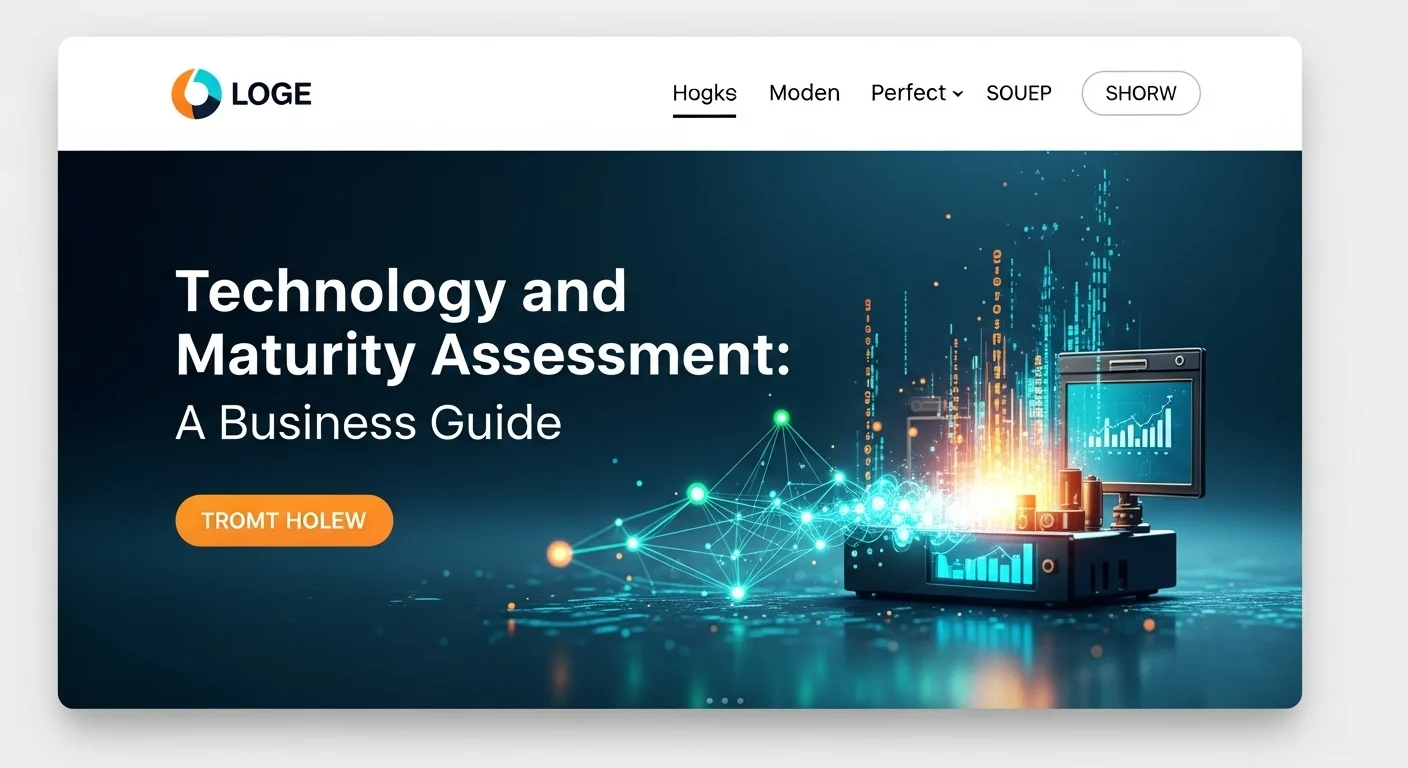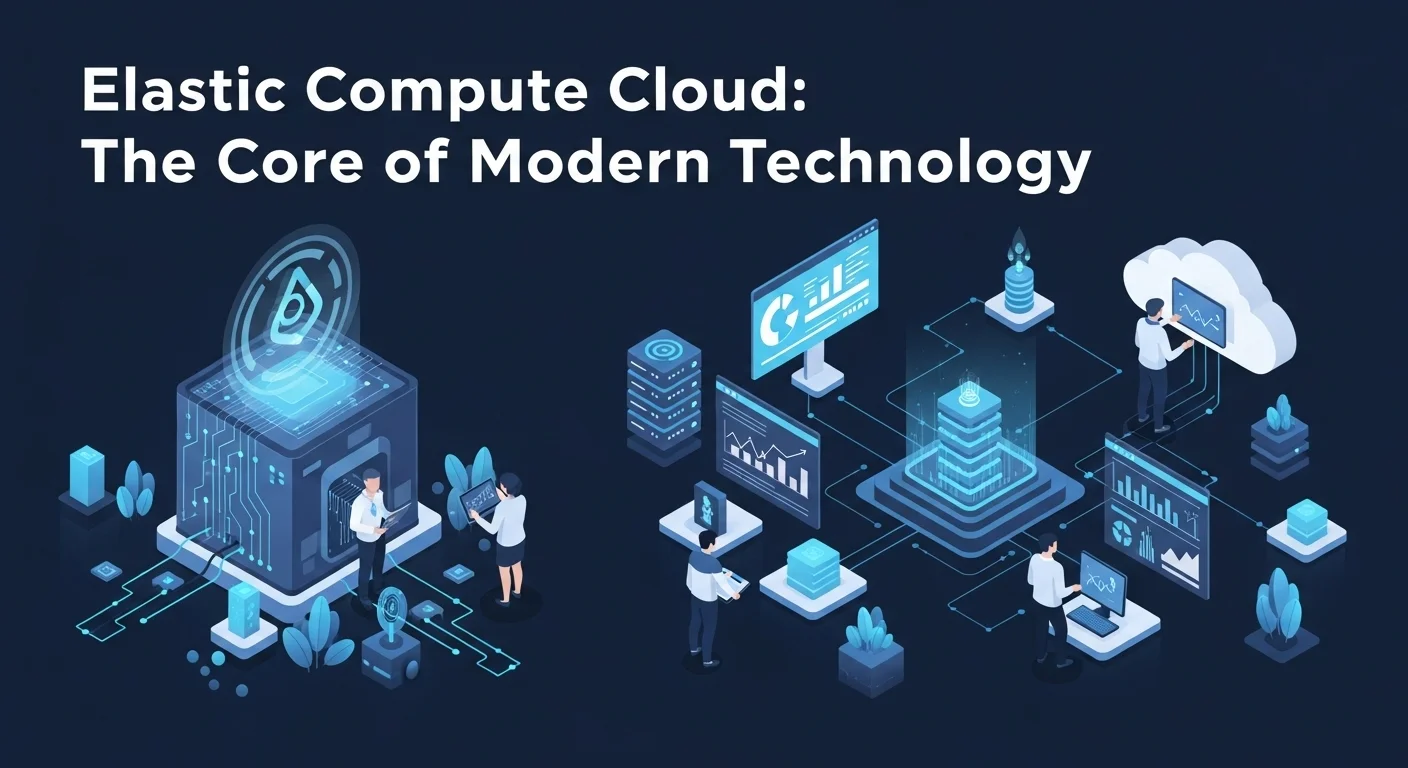Is Your Tech Holding You Back? A Practical Guide to Maturity Assessments

Executive Summary
In my 15+ years as an IT strategist, I've seen countless businesses either overspend on shiny new tech or lag behind with outdated systems. The problem isn't the technology; it's the lack of a clear map. A Technology Maturity Assessment is that map. It's a simple, powerful way to see where you are, where you need to go, and exactly how to get there. This guide will walk you through it, focusing on practical steps, especially for critical areas like cybersecurity. We'll ditch the complex jargon and give you a real-world plan to turn your tech into your biggest competitive advantage.
Table of Contents
Table of Contents
- What is a Technology Maturity Assessment?
- Why It's a Game-Changer for Your Business
- A Closer Look at Cybersecurity Maturity
- Business Applications and Strategic Benefits
What is a Technology Maturity Assessment?
Let’s be honest, in business today, technology isn't just a department; it’s woven into everything we do. But throwing money at the latest gadgets won't guarantee success. You need to know how well your tech is actually working for you. That's where a Technology Maturity Assessment comes in. Think of it as a health check-up for your company's technology. It’s a thorough look at your tools, your processes, and your people, measured against a proven standard. The goal isn't to get a passing grade, but to understand your 'maturity' level—where you are on the journey from chaotic and reactive to streamlined and forward-thinking.
I’ve seen many models, but a simple way to think about it is with five levels: Initial (where things are messy and unpredictable), Repeatable (you have some processes, but they aren't consistent), Defined (you’ve documented your processes), Managed (you measure and control your processes), and Optimized (you’re constantly improving and innovating). Knowing which stage you’re in is the first, most crucial step toward making smart, strategic decisions instead of just putting out fires.
The Critical Importance of Maturity Assessment in Technology
Conducting a maturity assessment is more than just a box-ticking exercise; it’s one of the most powerful strategic moves you can make. It gives you a clear, honest baseline of where you stand right now. Without that baseline, your tech budget can feel like a shot in the dark, leading to wasted money and missed opportunities. I once worked with a client who was about to spend six figures on a new software suite. After we ran a quick assessment, we realized their core problem wasn't the software, but their internal workflows. We fixed the process for a fraction of the cost and they saw an immediate boost in productivity. That’s the power of having a clear picture.
A Closer Look at Cybersecurity Maturity
Nowhere is this more critical than in cybersecurity. With cyber threats becoming more sophisticated every day, a reactive approach is a recipe for disaster. A cybersecurity maturity assessment, sometimes called a security maturity assessment, digs deep into how well you can prevent, detect, and respond to an attack. It’s not just about having a firewall; it’s about evaluating the resilience of your entire security program. This protects your data, your money, and, most importantly, your reputation. For many smaller businesses I've worked with, this journey starts with a simple tool: a cyber security maturity assessment excel spreadsheet. It’s a fantastic starting point. It helps you organize your thoughts and introduce basic security concepts to your team. However, I always caution them that it's a first step. An Excel sheet can be prone to errors and quickly becomes outdated. As you grow, you'll need more dynamic tools, but that simple spreadsheet is often the spark that gets the whole process started.
Business Applications and Strategic Benefits
The insights from a maturity assessment ripple through the entire business. For leaders, it provides the data needed to align IT spending with real business goals. When you know your tech's strengths and weaknesses, you can build a realistic roadmap and justify your budget with confidence. Operationally, it highlights bottlenecks. An assessment of your IT support might reveal why tickets take so long to resolve, leading to simple fixes that boost morale and efficiency. For development teams, it can mean better products delivered faster. An information security maturity assessment takes a broader look, protecting all company information, digital or physical. It builds trust with your customers by showing you take privacy and compliance (like GDPR) seriously. The benefits are clear: 1. **Smarter Spending**: You put money where it will have the most impact. 2. **Lower Risk**: You find and fix vulnerabilities before they become costly disasters. 3. **Better Alignment**: The tech team and the executive team start speaking the same language. 4. **Competitive Edge**: Agile, efficient, and innovative companies always lead the pack. 5. **A Culture of Improvement**: It encourages everyone to think about how to do things better. A technology maturity assessment gives you the clarity to turn your tech from a necessary expense into your most powerful asset.

A Complete Guide to Maturity Assessment in Technology
Starting a maturity assessment can feel daunting, but with a structured approach, it’s entirely manageable. It's about picking the right tools for the job, collecting the right information, and turning that information into a real plan. There’s no single 'best' way; the right method depends on your company's size, industry, and what you’re trying to achieve. The first step is to get familiar with the established models that provide the roadmap for your evaluation.
Choosing Your Toolkit: Popular Maturity Models and Frameworks
Over the years, several frameworks have become the gold standard. I've used them all, and each has its strengths. Think of them as different lenses to view your organization. 1. **CMMI (Capability Maturity Model Integration)**: If you build software or products, CMMI is your framework. It’s rigorous and detailed, but it provides a clear path to creating higher-quality products consistently. It’s the framework for organizations serious about engineering excellence. 2. **ITIL (Information Technology Infrastructure Library)**: For any business that relies on IT services (which is nearly everyone), ITIL is the go-to. It’s all about delivering and supporting IT services efficiently. An ITIL-based assessment will help you streamline everything from help desk support to managing new technology rollouts. 3. **COBIT (Control Objectives for Information and Related Technologies)**: This one is a favorite among auditors and governance professionals. COBIT is excellent for aligning IT with business goals and managing risk. It helps answer the big question: 'Is our IT department doing what the business needs it to do, and can we prove it?'
A Deeper Dive into Security-Focused Assessments
Because security is so crucial, there are specialized frameworks I always recommend for a cybersecurity maturity assessment. 1. **NIST Cybersecurity Framework (CSF)**: This is my personal favorite for most organizations. Developed by the U.S. government, it’s flexible, risk-based, and easy for business leaders to understand. It’s built around five simple functions: Identify, Protect, Detect, Respond, and Recover. It’s less about a rigid checklist and more about building a mature, risk-aware culture. 2. **CIS Controls (Center for Internet Security Controls)**: If you're wondering where to start, the CIS Controls are your answer. They offer a prioritized list of defensive actions. I often tell smaller businesses to start by tackling 'Implementation Group 1'. It’s the essence of basic cyber hygiene and offers the biggest bang for your buck. A cyber security maturity assessment excel template based on CIS Controls is a very practical first step. 3. **CMMC (Cybersecurity Maturity Model Certification)**: If you work with the U.S. Department of Defense, this isn't optional. CMMC requires a formal certification. It has brought a new level of accountability to the industry and shows the growing trend towards verifiable security maturity. 4. **ISO/IEC 27001/27002**: This is the international standard for information security. Pursuing ISO 27001 certification is a major undertaking, but using its framework for an information security maturity assessment is a fantastic way to build a comprehensive, world-class security program.
The Practical Steps: How to Conduct the Assessment
No matter which framework you choose, the process generally looks the same: 1. **Define Your 'Why'**: Before you do anything, get everyone in a room and agree on what you're assessing and why. Are you worried about risk? Trying to improve efficiency? Getting stakeholder buy-in from the start is non-negotiable. 2. **Pick Your Framework**: Based on your 'why', choose the right model. Don't overcomplicate it. For a general security review, NIST or CIS are great. For service delivery, look at ITIL. 3. **Gather the Facts**: This is where the real work happens. It's a mix of interviewing key people, running workshops, reading your existing policies (if you have them!), and sometimes using tools to scan your systems. 4. **Analyze and Score**: This is where you compare what you found to the framework's standards. You'll assign a maturity score to each area, and the gaps between where you are and where you want to be will become crystal clear. 5. **Build the Roadmap**: The final report isn't the end; it's the beginning. It should contain a simple summary for executives and a detailed, prioritized action plan for the teams. This roadmap is your guide to reaching the next level of maturity.
Resources to Get You Started
For those starting out, a simple cyber security maturity assessment excel template can be a fantastic, low-cost tool. You can find many online based on NIST or CIS. But as you mature, you'll want to look at dedicated GRC (Governance, Risk, and Compliance) software. Tools like OpsLevel or CyberSaint can automate data collection and give you real-time dashboards. They turn the assessment from a once-a-year event into a continuous process. My advice is often to use a hybrid approach. Use a high-level framework like NIST to talk to the business, and use the specific actions from CIS to guide your technical teams. Remember, the goal is not to do one perfect assessment, but to build a habit of constantly measuring and improving.

Tips and Strategies to Get the Most from Your Maturity Assessment
Running a successful maturity assessment and actually seeing results from it is part art, part science. It’s about more than just frameworks and data. From my experience, the difference between an assessment that gathers dust on a shelf and one that sparks real change comes down to strategy, people, and a commitment to the process. Here is some practical advice I share with all my clients.
Best Practices for an Effective Assessment
To make sure your efforts pay off, keep these principles in mind: 1. **Get Executive Buy-In (Seriously)**: Let me be blunt: if your leadership team isn't championing this, it's likely to fail. When a CEO or board member supports the assessment, it gets the resources it needs and sends a message that this is a priority. I always insist on presenting the final results to leadership, framed in terms of business risk and opportunity, not technical jargon. 2. **Make it a Team Sport**: This can't be just an IT project. I've seen the best results when we involve people from every part of a business—finance, HR, legal, operations. They know how technology truly impacts their daily work. For a cybersecurity maturity assessment, this is vital. Security is everyone's responsibility, and you need their perspective to see the full picture. 3. **Embrace Brutal Honesty**: The goal here is to get an accurate snapshot, not a flattering one. I always encourage teams to be open about what's broken without fear of blame. You can't build a solid plan on a shaky foundation of false optimism. 4. **Start with 'Why'**: Before you get lost in spreadsheets and controls, make sure everyone is crystal clear on the purpose. Are we doing this to lower our insurance premium? To prepare for an audit? To innovate faster? A clear purpose is your North Star for the entire project. 5. **It's a Marathon, Not a Sprint**: A maturity assessment is a point-in-time snapshot. Your business and the tech world are constantly changing. I advise my clients to plan for regular assessments, at least annually. This creates a cycle of continuous improvement, which is the very definition of becoming more mature.
Leveraging the Right Tools and Technology
That cyber security maturity assessment excel spreadsheet is a great place to start, but to do this professionally, you’ll want to graduate to better tools. **Governance, Risk, and Compliance (GRC) Platforms**: Tools from companies like ServiceNow or LogicGate are the enterprise choice. They manage the entire process, from data collection to reporting, and create a single source of truth for your maturity. **Specialized Assessment Tools**: There are also fantastic platforms built just for a cyber maturity assessment, like CyberSaint or Secureframe. They often connect to your systems for continuous monitoring, giving you a live view of your security posture. For software development, I’m a big fan of **Internal Developer Portals (IDPs)** like OpsLevel. They let you track the maturity of all your software services against your own internal standards, empowering developers to own their quality and security.
Real-World Stories and a Key Resource
These stories illustrate the impact: * **The Small Business Win**: A local accounting firm was terrified of ransomware. We used a simple cyber security maturity assessment excel sheet based on the CIS Controls. It was managed by their office manager. The assessment quickly showed they had no reliable data backups and zero employee security training. Their roadmap was simple: sign up for a cloud backup service and start quarterly security training. It was a low-cost, high-impact win. * **The Mid-Sized Tech Turnaround**: A fast-growing SaaS company used the NIST framework for their security maturity assessment. The results were a wake-up call for the board: their product was growing much faster than their security, creating massive business risk. The assessment directly led to them hiring their first security chief and building security into their development process. * **The Enterprise Standard**: A global bank I consulted for uses a GRC platform to run continuous information security maturity assessments against the ISO 27001 standard. For them, maturity scores are a key metric for IT leadership, used to demonstrate compliance to regulators and maintain the trust of millions of customers. If you're serious about this, you need to go to the source. The best resource for any cybersecurity maturity assessment is the official NIST Cybersecurity Framework website. It's packed with free guides and resources for companies of any size: NIST Cybersecurity Framework. In the end, using maturity assessments to improve your technology is a strategic choice. By combining these best practices with the right tools, you can build a more resilient, efficient, and innovative business. A well-run assessment isn't just an audit; it's the roadmap to your future success.
Expert Reviews & Testimonials
Sarah Johnson, Business Owner ⭐⭐⭐
The information about Maturity Assessment is correct but I think they could add more practical examples for business owners like us.
Mike Chen, IT Consultant ⭐⭐⭐⭐
Useful article about Maturity Assessment. It helped me better understand the topic, although some concepts could be explained more simply.
Emma Davis, Tech Expert ⭐⭐⭐⭐⭐
Excellent article! Very comprehensive on Maturity Assessment. It helped me a lot for my specialization and I understood everything perfectly.



